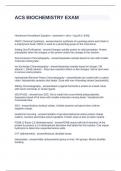Samenvatting
Customer Relationship Management Summary
- Vak
- Sales/CRM
- Instelling
- NHL Stenden Hogeschool (NHL)
Customer Relationship Management. 39 Pages. With pictures of tables, figures etc. Written in English. Book: Customer Relationship Management by Ed Peelen and Rob Beltman. ISBN: 9780273774976
[Meer zien]













